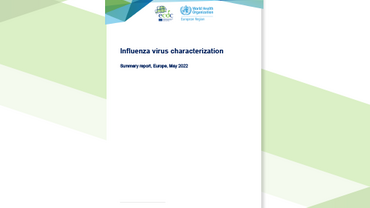Influenza virus characterisation, Summary Europe, December 2015
From week 40/2015, the start of weekly reporting on influenza activity in the WHO European Region, to week 53/2015, 4 579 influenza detections across the Region have been reported. Influenza type A viruses are prevailing over type B, but, unlike the situation in the 2014¬–15 season, A(H1N1)pdm09 viruses are prevailing over A(H3N2), and the proportion of B/Victoria-lineage detections has risen substantially to represent ~62% of the type B detections.
Executive Summary
To date, seven EU/EEA countries have shared 94 influenza-positive specimens with the Francis Crick Institute, London, for detailed characterisation. This includes three additional countries and 47 additional specimens since the November 2015 report. Since the latter report, 29 viruses have been characterised antigenically, and genetic analyses are ongoing.
The 23 A(H1N1)pdm09 viruses characterised antigenically were similar to the vaccine virus A/California/07/2009. Worldwide a new genetic subcluster of viruses within the 6B subgroup has emerged, defined by HA1 amino acid substitutions S162N and I216T, and 50% of the test viruses characterised in this report fall in this subcluster.
The three A(H3N2) test viruses characterised by haemagglutination inhibition (HI) assay were poorly recognised (titres at least thirty-twofold reduced compared to the homologous titre) by reference antiserum raised against egg-propagated A/Switzerland/9715293/2013, the vaccine virus recommended for use in the 2015–2016 northern hemisphere influenza season. The test viruses were recognised somewhat better by antisera raised against egg-propagated A/Hong Kong/4801/2014, the virus recommended for use in southern hemisphere 2016 influenza vaccines.
The B/Victoria-lineage virus was antigenically similar to B/Brisbane/60/2008 and fell in genetic clade 1A, as do recently collected viruses worldwide.
The two B/Yamagata viruses characterised fell in genetic clade 3 and reacted well with post-infection ferret antiserum raised against egg-propagated B/Phuket/3073/2013, the recommended vaccine virus for the northern hemisphere 2015–16 influenza season.





